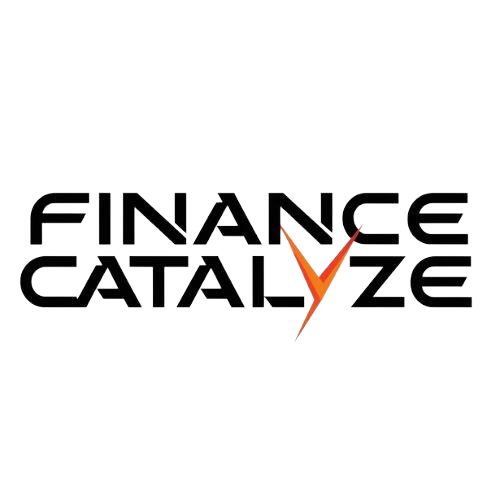Carrying a high accounts receivable (AR) balance is a harsh reality for many businesses. Every unpaid invoice represents your hard-earned cash sitting in someone else’s bank account rather than your own. While the financing cost of funding that outstanding AR is obvious there are numerous other surprise hidden costs that most companies overlook until it is too late. Let’s dive into the wide ranging impacts you could be facing.
The Financing Burden of Accounts Receivable
The most apparent cost of maintaining accounts receivable is the financing expense required to fund that working capital shortfall. When customers are not paying their invoices you are forced to take out loans line of credit or burn through cash reserves to keep operating. Those interest charges and fees can quickly compound.
For example let’s say your business is carrying $100,000 in AR over 60 days past due. At a conservative 18% APR financing cost you are paying around $1,500 per month – or $18,000 annually – just in interest to support that outstanding balance. That is a significant drain on profitability.
The Operational Costs of Chasing Payments

But the costs do not stop there. Think about all the administrative time and resources required to manage your accounts receivable process:
- Generating and sending invoices
- Processing payments as they come in
- Handling customer inquiries and disputes
- Sending payment reminders and chasing late payers
A sobering statistic the average AR clerk spends 25% of their time simply following up on late payments. That is over 10 hours per week per employee devoted to collections efforts instead of revenue-generating work.
And if those late accounts continue aging despite your efforts, you may have to escalate to using debt collection agencies which can charge 25-50% of the invoice value to try recouping the payment.
Read also this: How to Improve Cash Flow with Purchase Order Financing?
The Looming Threat of Bad Debts
Speaking of unpaid invoices as your AR continues aging out further the risk grows that it will become an uncollectible bad debt write off. Even the IRS requires businesses to make allowances for expected bad debts each year based on accounts receivable turnover ratios.
Just look at the cautionary tale of a Company which had to write off in bad debts after being too lax with their credit policies virtually crippling their cash flow that year. Strong credit control procedures from the start are essential to mitigate this risk.
When the Cash Flow Pipeline Runs Dry
Beyond the direct costs, one of the most damaging impacts of carrying high accounts receivable is the unpredictability it creates in your cash flow forecasting. It is like trying to steer a ship without knowing when the next wave of payments will hit.
When you can not reliably predict the timing of incoming cash from customers, that throws off your entire budgeting and planning processes. It becomes extremely difficult to:
- Manage your payroll and vendor payments
- Reinvest in growth initiatives like marketing or R&D
- Make capital expenditures and other investments
- Take advantage of new opportunities as they arise
Uncertainty like this often forces companies into a defensive risk averse mode starving their business of the fuel it needs to grow and thrive.
The Steep Opportunity Costs
Speaking of missed opportunities, let’s talk about the unseen “opportunity costs” of having your cash trapped in outstanding accounts receivable. Every dollar tied up in unpaid invoices is a dollar that can’t be reinvested back into revenue-generating activities for your company.
Most businesses could realistically increase revenues by 20% or more simply by re-deploying that working capital more strategically into:
- Marketing campaigns to attract new customers
- Product development and innovation
- Equipment upgrades or facility expansions
- Hiring additional sales talent
When you are deprived of that financial flexibility you are leaving money on the table in the form of diminished growth potential.
Also read this: What Credit Score Is Needed For Care Credit?
The True Cost – Time is Money

Finally, let’s discuss one of the most valuable resources tied up by accounts receivable – your own time, and that of your senior leadership team. As a business owner or executive, is chasing late customer payments really how you want to be spending your day?
Every hour consumed by AR-related meetings, phone calls, putting customers on hold, and supervising collections efforts is an hour not spent on the priorities that truly drive your company forward and increase profitability, like:
- Developing strategy and vision
- Managing teams and talent
- Accelerating sales and growth
- Identifying new market opportunities
Your business loses a large piece of its competitive advantage when its principals are bogged down handling the accounts receivable funk. Time is money and AR issues sap this precious resource.
In Summary
While the direct financing cost of supporting outstanding AR is fairly obvious, the reality is that carrying significant accounts receivable weighs on your business in numerous other “hidden” ways, including:
- Administrative costs of collections efforts
- Provisions for potential bad debt write-offs
- Loss of cash flow predictability and flexibility
- Missed opportunity costs from cash being trapped
- Drain on leadership’s time and strategic focus
By maintaining an acute awareness of this full range of costs and impacts you will be better equipped to regain control over your cash flow. Reassess your credit policies strengthen collections procedures and reduce your Days Sales Outstanding the rewards of an optimized AR process will pay dividends across your entire operation.
Real-World Examples and Case Studies
To further illustrate the costs of carrying high accounts receivable, it can be powerful to include some real-world case studies and examples:
Manufacturing Company Write down A mid-sized manufacturing company in Ohio had to write off over $350,000 in bad debts after being too lax in extending credit without robust evaluations. This massive unexpected hit completely wiped out their profits for the year and forced them to layoff 10% of their workforce.
Cash Flow Crisis at Retail Startup A promising e-commerce startup selling sustainable apparel found themselves in a vicious cash flow cycle. As they rapidly grew sales, their accounts receivable ballooned from accepting credit card payments with lengthy 60-90 day holding periods. With most of their capital trapped in AR, they couldn’t fund the inventory for new product launches – missing out on peak sales periods and growth opportunities.
Public Company Investor Warning In their 2022 annual report, a $2B public technology company specifically called out rising accounts receivable as a risk factor to monitor. They noted the increasing costs of carrying AR amid high interest rates as well as the opportunity cost of restraining R&D and growth investment due to the working capital crunch.
Stories like these hammer home just how quickly AR issues can derail a company’s profitability and momentum if not managed proactively.
Strategies to Reduce AR Costs
The post could also provide some proven strategies businesses can implement to rein in accounts receivable costs, such as:
- Tightening credit approval policies and processes
- Negotiating more favorable payment terms with customers
- Implementing incentives for early payment, like discounts
- Utilizing AR financing solutions like invoice factoring
- Investing in collections automation software
- For B2C companies, only accepting secure online payments
Quantifying the Potential Savings To really drive the point home, give a quantified example of the savings possible:
Let’s say your business currently has $500,000 outstanding in AR over 60 days, which based on the costs we have covered is conservatively costing around $90,000 annually to carry. By implementing strategies to reduce your DSO by just 15 days, you could instantly save over $20,000 per year – a significant boost to profit margins and working capital.
Taking the Next Step
The conclusion could provide readers a direct call-to-action, such as:
Ignorance around the true costs of accounts receivable is no longer an excuse. By understanding the multitude of impacts AR has on your cash flow, profitability and growth potential. You can build a sense of urgency around optimizing your policies and processes.Take an honest assessment of your business’ current AR situation and costs. If you’d like an expert opinion on areas for improvement, our team.We offer a free AR evaluation to identify opportunities for savings.
Accounts Receivable Costs by Industry
The impact of carrying high accounts receivable can vary significantly across different industries based on factors like:
- Average payment terms and cycles
- Customer credit profiles and risk levels
- Operational cash flow needs
- Availability of financing options
Manufacturing With suppliers that may require payment upfront or on short terms, manufacturers often have very little flexibility on the receivables side. Carrying 60-90 days AR can potentially tie up 25-30% of their working capital in outstanding payments – constraining their ability to purchase raw materials and fund production cycles.
Distribution/Wholesale
While distributors may not face the same production cash flow crunches, their high volume of transactions and credit exposure can make AR costs skyrocket quickly. It is not uncommon for AR management costs to reach 5% or more of revenues for large wholesale companies with revolving inventories.
Professional Services Unlike product-based businesses, services firms have lower working capital needs overall. They may face more subjective challenges like customers disputing invoices or inability to complete projects before billing. This increases administrative AR costs while also delaying cash inflows.
Healthcare Dealing with a complex landscape of insurance payors, healthcare providers often carry AR for 90+ days. This creates a major drag, as financing costs for their high-value services can quickly outpace the principal AR balances themselves over time.
Understanding the unique challenges and norms for your specific industry can help provide context around reasonable AR levels and associated costs to target.
How Technology Helps Optimize AR

In today’s digital age, companies have a wealth of technology solutions at their disposal to drive down accounts receivable costs, including:
AR Automation Software: Platforms that automate previously manual AR tasks like invoicing, payment reminders, cash application and reporting. This eliminates costly human errors while freeing up staff for more strategic priorities.
Online Payment Portals: By giving customers self-service web portals to view and pay invoices seamlessly online 24/7, you accelerate collection cycles dramatically.
Robotic Process Automation (RPA): Using bots to handle functions like data entry, customer communications, and other low-level AR tasks boosts accuracy and efficiency.
Analytics and Forecasting Tools: Leveraging big data and predictive algorithms to analyze AR aging trends, forecast cash flows more accurately, and pinpoint customers at risk of late/delinquent payments.
Integration with Accounting/ERP Systems: Connecting AR processes with core financial systems improves reporting, compliance, cash application, and eliminates silos.
Even implementing one or two of these modern AR technology tools can pay massive dividends by reducing the organizational costs outlined earlier.
As you can see, there are numerous angles to consider when evaluating the true costs of accounts receivable for your business. The key is maintaining an awareness of these hidden costs beyond just financing charges. With that full picture in mind you can then take the necessary actions to optimize your AR management strategies processes and technology solutions. Doing so will provide a substantial boost to your cash flow profitability and growth trajectory.
Frequently Asked Questions
What are the main costs of accounts receivable?
The key costs include financing charges, administrative overhead potential bad debt write-offs cash flow unpredictability, opportunity costs from trapped capital and the time/resource drain on leadership.
How much do accounts receivable typically cost a business?
Costs can easily reach 5-10% of total receivables value when accounting for all the direct and indirect impacts like financing staffing technology investments etc.
What industries are most impacted by high AR costs?
Manufacturing distribution healthcare providers and any businesses with long payment cycles low margins or high transaction volumes often struggle most with AR costs.
How can businesses reduce accounts receivable costs?
Strategies include tightening credit policies negotiating better payment terms offering incentives for early payment using AR automation software and financing solutions like invoice factoring.
What are the opportunity costs of high accounts receivable?
With working capital trapped in outstanding invoices businesses miss out on investing in growth drivers like marketing R&D equipment upgrades talent acquisition and other revenue-generating activities.
Why is accounts receivable so costly for small businesses?
Smaller companies have less financial flexibility so the financing costs and cash flow uncertainties of carrying AR can cripple operations and force difficult trade-offs on investments.
Conclusion
Carrying significant accounts receivable weighs heavily on businesses through direct costs like financing charges as well as surprising hidden costs around operations bad debt risks cash flow problems and immense opportunity costs. By optimizing AR levels and processes companies can alleviate this profitability drain and rededicate resources toward growth and strategic priorities.

Haarrii, a seasoned finance expert with 4 years of hands-on experience, brings insightful analysis and expert commentary to our platform. With a keen eye for market trends and a passion for empowering readers, Haarrii delivers actionable insights for financial success.







